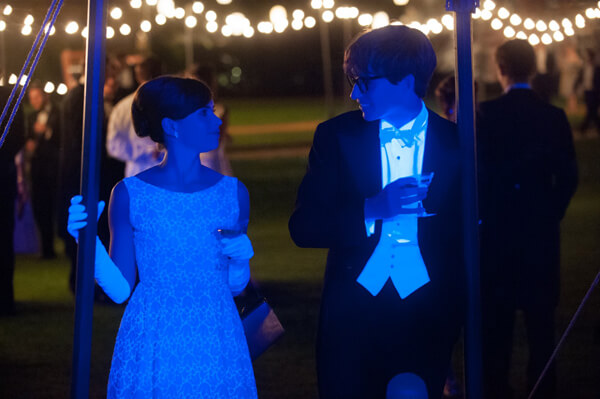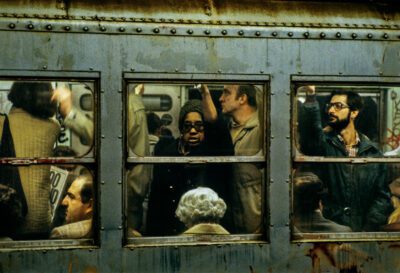Is The Theory of Everything Actually About Anything?


“Love is the one thing that transcends time and space.” -theoretical physicist Stephen Hawking (this has been a release-week joke made for the sake of posterity)
Here’s a question that sounds unscientific and also somewhat absurd: what, exactly, is The Theory of Everything about? The key word is “exactly,” because the movie is clearly about the astrophysicist Stephen Hawking (Eddie Redmayne), who the movie finds as a bespectacled, gangly, somewhat awkward Cambridge grad student in 1963. Two life-changing events happen in quick succession: he meets fellow student Jane Wilde (Felicity Jones); and he is diagnosed with motor neuron disease, which will decimate his ability to move and speak, though not his big, humming brain (nor, as it turns out, his ability to father children).
Here The Theory of Everything lays out two paths: the biopic about a genius defying overwhelming adversity to make his mark on the world, or the untold relationship story beneath that biopic, about the woman who changed the genius’s life (the theory was love all along!). I’m sure the filmmakers would characterize it as both. What it chooses, though, is neither. I don’t mean “neither” in the sense that it forges a third, less conventional path, or that it mixes the two stories in smart and unexpected ways. I mean that The Theory of Everything does not work.
It’s puzzling, really: the movie does not explain Hawking’s accomplishments in any great detail, choosing instead the go-to genius illustration move of a teacher passing out impossible (and mostly unnamed) problems and not showing our hero complete them so much as that he completes them. But the time the movie saves by reducing Hawking’s genius to the context of plaudits (and his life’s work to a search for a “unifying theory” that explains the whole universe) isn’t forked over for a detailed portrait of his marriage. Key moments pass in montage and home-video footage, most of the relationship stemming from the charm of the actors. Felicity Jones, with little parentheses surrounding her mouth like a Van Pelt sibling, knows how to give a quiet, meaningful look, while Redmayne, with his slightly froggy notes in his failing voice, meets the rigorous physical challenge of collapsing his gangly physicality into a wheelchair. Their early flirtation has a bookish pull, and then… the movie just trudges along.


This is Cumberbatch as embattled 20th century English genius Stephen Hawking in ‘Hawking’, not Cumberbatch as embattled 20th century English genius Alan Turing in ‘The Imitation Game’, that comes out in three weeks, this has been another release-date joke for the sake of posterity.
Jane decides early on to stand by her man, and the couple faces, yes, adversity; the movie even dispenses with enough idealism to show how difficult their joint life could be for Jane, rather than reducing her to one more Hawking triumph. The screenplay, by Anthony McCarten adapting Wilde’s memoir, ever so slightly bends to Jane’s point of view, in the sense that her years-later extramarital temptation is portrayed as innocent and anguished, while Hawking’s is kind of unavoidably creepy. Despite the whiffs of opinion, though, most of the drama plays surprisingly perfunctory, the dramatizations curiously flat; I suspect the guts of this marriage aren’t onscreen. If they are, they’re pretty dull guts. None of this would be interesting without Hawking; it’s barely interesting as it is.
Once in a while, there’s a moment with some emotional heft: director James Marsh lingers on Redmayne as he hesitates to push “send” on a hurtful announcement that must be delivered, as all of his speech is later in life, via that now-familiar computerized voice. Mostly, though, The Theory of Everything drifts along in a sea of lush colors and mild incident. There’s no big bang here; there’s barely a buzz of electricity. I went in fearing awards bait and left wondering if the movie even has enough life for the lowly task of enticing Oscar voters. As told by Theory, the story of Hawking and Wilde is a two-hander with both hands tied behind its back.
You might also like 




















